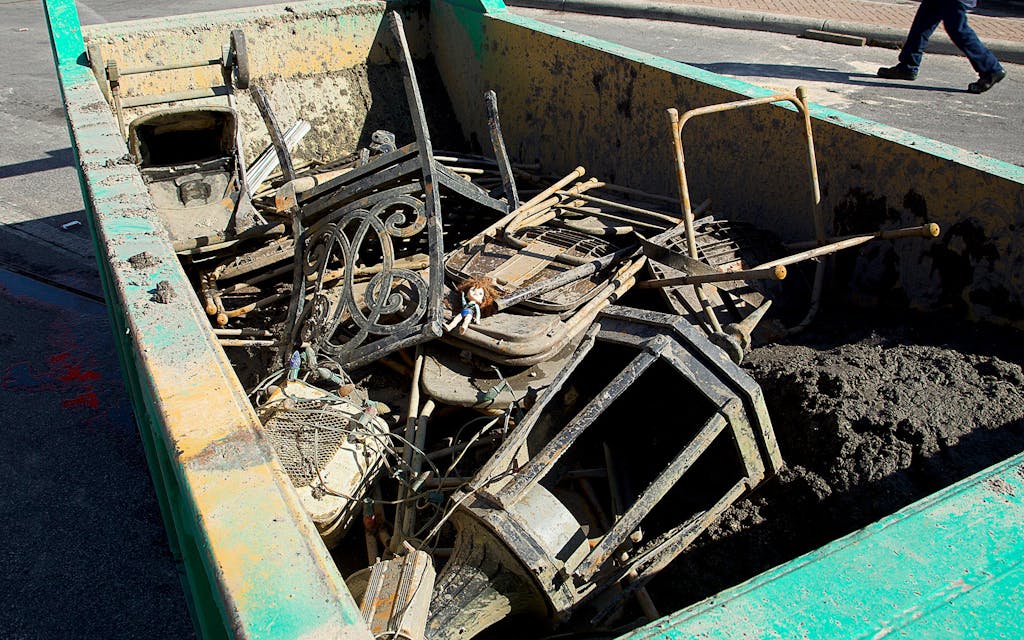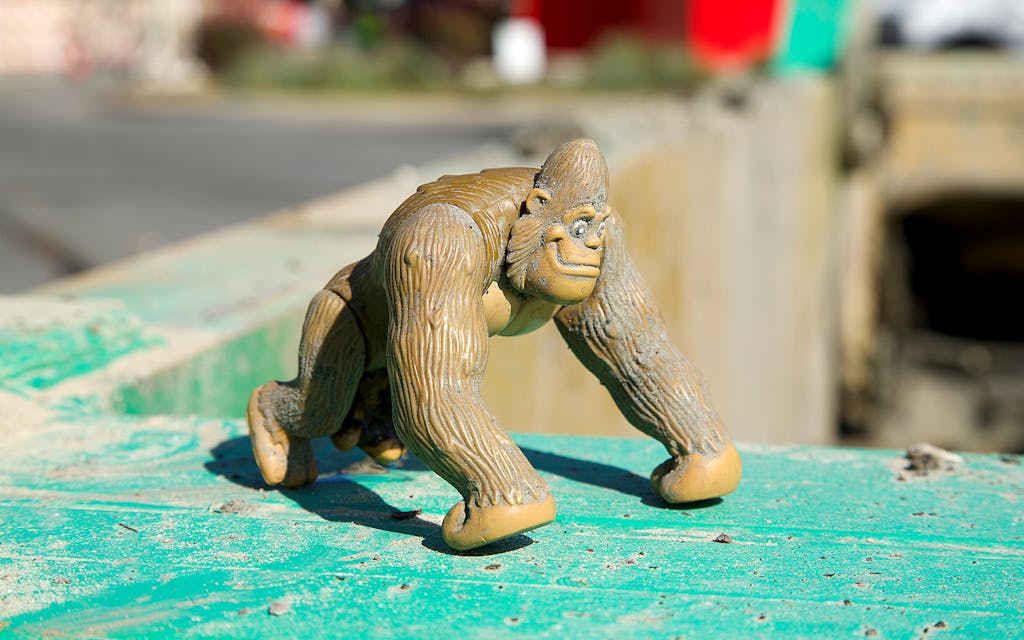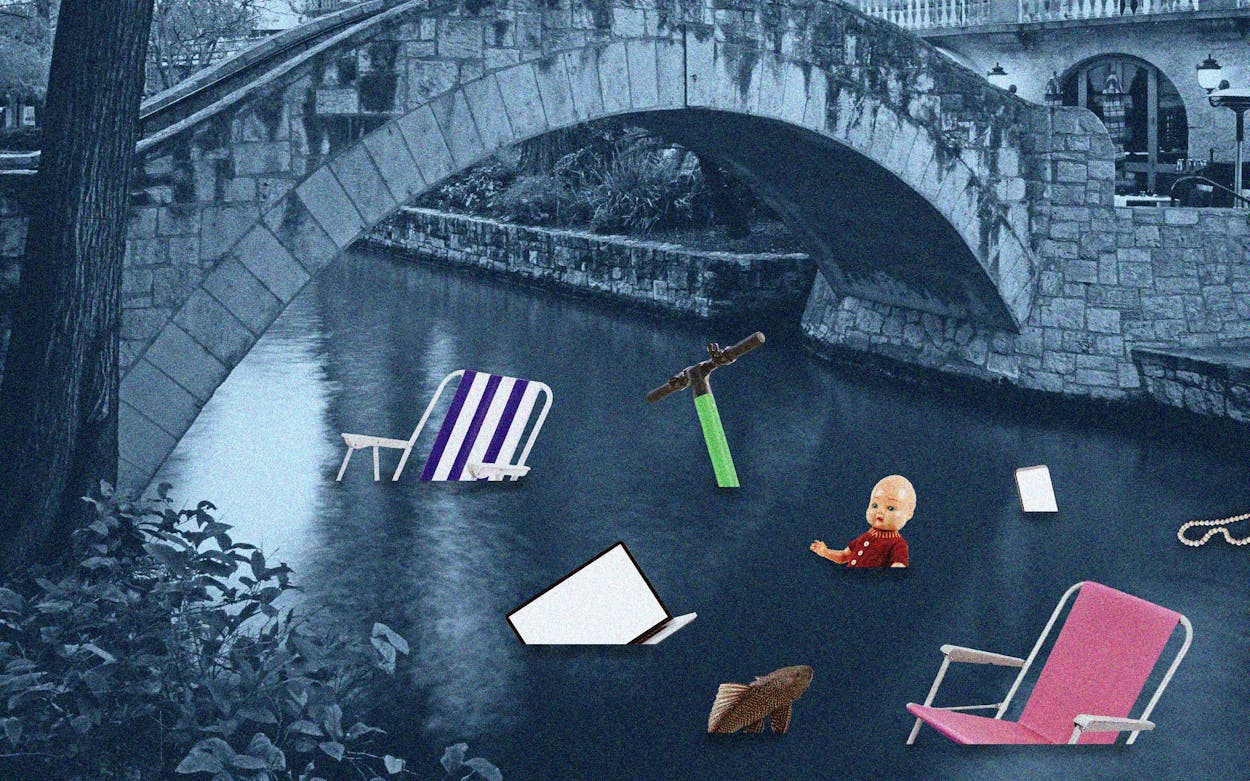Featured in the San Antonio City Guide
Discover the best things to eat, drink, and do in San Antonio with our expertly curated city guides. Explore the San Antonio City Guide
On an overcast afternoon in late January, the San Antonio River Authority’s Carrie Merson and I meandered along the rio by the Pearl Brewery, about a mile and a half north of downtown. We marveled at the serenity of our surroundings. The water was lower than usual, in the midst of a temporary draining so the San Antonio Public Works Department could conduct some much-needed maintenance on the infrastructure of the River Walk loop and extension downtown. But parts of the river were still submerged by about two feet, plenty of space for fish and turtles to swim around in. The water was surprisingly clear, despite its proximity to a major urban mixed-use development, so Merson (who handles communications for the river authority) and I stopped to point out whatever creatures we could spot below the surface. We saw a cormorant diving repeatedly, his beady eyes glinting with determination, and pulled out our phones to take video when he came back up with what appeared to be a smallmouth bass in his beak. We looked for apple snails, an invasive species that can wreak havoc on the ecosystem, but didn’t find any, probably because teams of biologists from the river authority had already used the draining project as an opportunity to find and relocate hundreds of them. “Hey look, a catfish!” I said, pointing to a dark form slinking through the water. It swam over the algae-covered limestone rocks that make up your standard Hill Country river bottom. Next to them, similarly coated in a fluffy green veneer of aquatic growth, was the distinct, unforgettable outline of a discarded Lime scooter.
There is a lot of trash in the San Antonio River, something that becomes abundantly clear every two to four years when the public works department, the San Antonio River Authority, and Center City Development & Operations come together to drain the river for maintenance and cleanup. This year’s project, which took place in the last week of January, was no exception. A team of more than 110 staffers pulled out cellphones, Mardi Gras beads, jewelry, and children’s toys. There were a lot of chairs, and plenty of decorative terra-cotta planters, the kind that line the River Walk—and, apparently, periodically plop right into the water. The public works department hauled away several dumpsters’ worth of trash, silt, and debris (they are still calculating the total tonnage). Let’s take a gander at some of this year’s more exciting finds.

There’s a lot going on in the above photograph. Toward the bottom of the frame you can see a big outdoor light fixture. You can imagine that the River Walk is lined with such things, but how does one simply fall in? Perhaps an act of sabotage? A strategically timed roundhouse kick from a very strong San Antonian who prefers the dark? A mystery, for sure.
As you can see, this dumpster is chock-full of folding chairs—at least a half dozen. They seem perfectly functional to me, but someone clearly wanted to sink them to the depths of the rio. There is also one metal patio chair, presumably from a River Walk–adjacent restaurant deck. But which one? Was it collateral damage in a dramatic Real Housewives–style table flip? Did it lose its partner some years ago and later sought only to be reunited with its true love on the river bottom? The possibilities abound.
Now move your eyes to a discarded space heater in the bottom left corner of the frame. There you’ll find a muddied string of Christmas lights. The River Walk apparently has a Grinch problem. I guess the War on Christmas is real after all. This trash may be a little more interesting than the chairs, but still, it’s hardly the star of the show. ENHANCE!

For, you see, we have royalty in our midst. There she is, Princess Anna of Arendelle, naked and dirty. She’s stripped to her skivvies, her hair no longer in smooth, plaited pigtails, but reduced to a rat’s nest that radiates electrocution chic. How did she get here? She certainly doesn’t remember.
Speaking of children’s toys . . .

This guy seems to have fared better than her royal highness. Look at that smile on his face! He’s just happy to be here.
This year, the public works department only fully drained one part of the River Walk (the loop that encircles downtown and the extension that juts off from it), while the last time the river was drained, in January 2020, the team drained the 2.5-mile main stretch. Notable finds that year included a laptop, some cellphones, and a prayer candle. Could there be some correlation between the careless discarding of such a spiritual object and the events that would unfold two months later, in March 2020? Who can say? But do keep that in mind the next time you think about littering.


It’s not just refuse that is pulled from the San Antonio riverbank every two years. The river authority uses the opportunity to clear the river of the invasive species that threaten its natural ecosystem. This includes Ampullariidae, also known as apple snails, so named because they are about the size of small to medium Gala apples. They are non-native, and very gross; you can’t even eat them as escargots (which SARA biologists say is the most common question they receive about them). Apple snails compete with native species for food and resources; they eat everything, and a lot of it. This year, the SARA team pulled up hundreds of the slimy mollusks, some of which were donated to Texas State University for research, with others were disposed of humanely, as per the Texas Parks and Wildlife Department’s guidelines (or, as I like to think of it, “sent back to hell, where they belong.”) The river authority also rids the rio of tilapia, which threaten native fishes’ ability to find food and shelter, and suckermouth armored catfish, a staple of tropical home aquariums that reproduce exponentially when dumped into Texas freshwater, causing severe erosion to riverbanks.
Not everything that emerges during the drain meets its demise. As water spills through the Olmos Dam into the Olmos Basin north of downtown, SARA biologists and volunteers are stationed along the entire five thousand meters of riverbank. They scour the shores, looking for beached fish, then relocate them to safer waters until the river rises again. This year they moved about 350 fish—native species including largemouth bass, sunfish, shiner, and bullhead catfish—or about a quarter of what they have in prior draining projects. That’s mostly because this year’s project had a smaller scope, focusing only on the River Walk extension. “The upside is that we lose about a quarter of what we normally do,” said Chris Vaughn, the river authority’s senior aquatic biologist.
The San Antonio River Authority employs nearly 300 people, all working together to make the rio safe and enjoyable not only for the creatures that live in it, but for the city’s citizens. As I learned during my brief stroll along the riverbank by the Pearl, they do a fine job. Though the river has long had a reputation for being filthy, it’s likely the cleanest it’s been in decades. The water is a tranquil green that rivals the color and clarity of that of Barton Springs, which Austin is always bragging about. It would look even better without any scooters in it, with their batteries at risk of leaking toxic chemicals into the ecosystem. And it sure would be great if people would stop dumping their chairs, their cellphones, and their Disney dolls into its waters.
- More About:
- San Antonio








